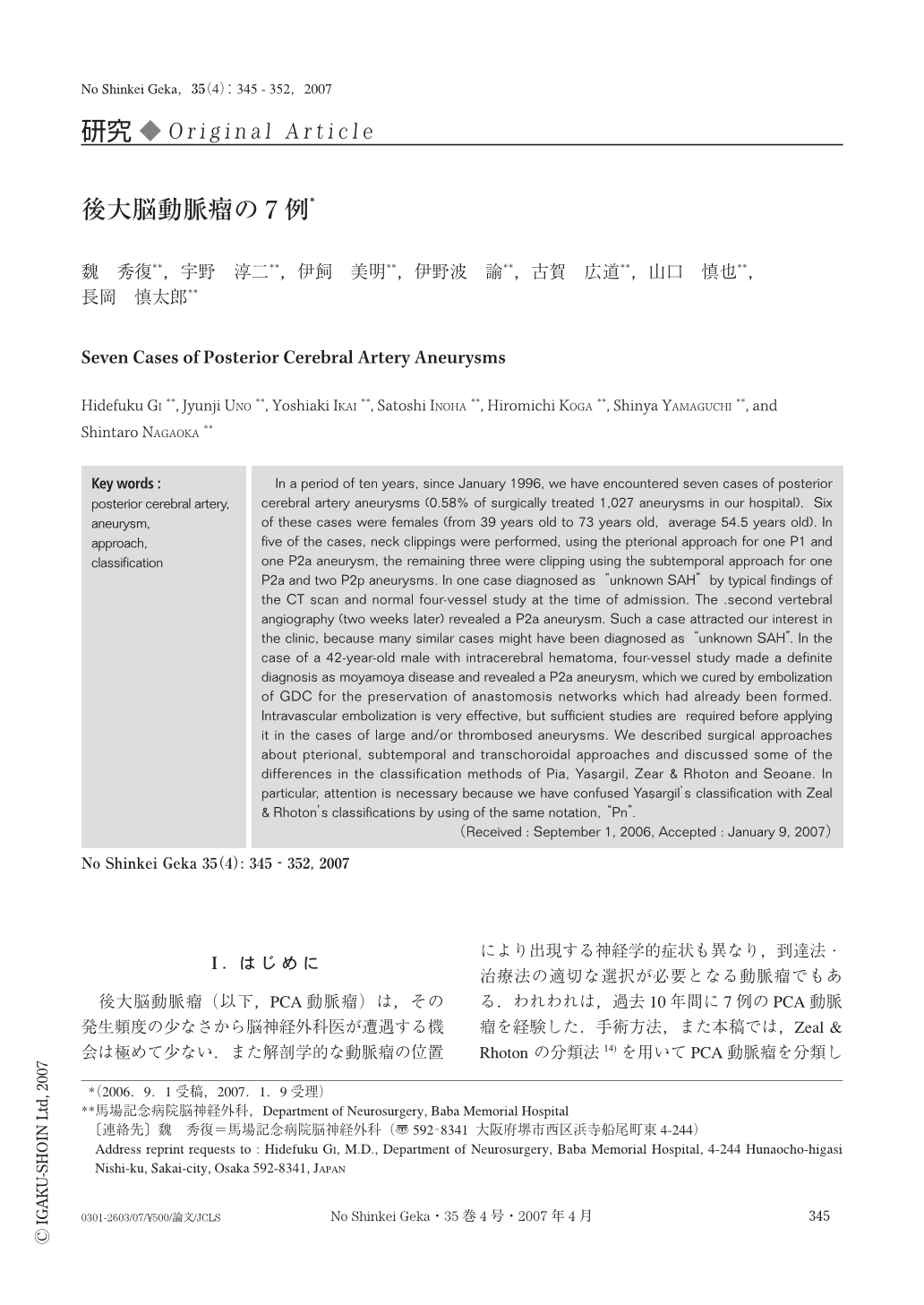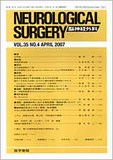Japanese
English
- 有料閲覧
- Abstract 文献概要
- 1ページ目 Look Inside
- 参考文献 Reference
Ⅰ.はじめに
後大脳動脈瘤(以下,PCA動脈瘤)は,その発生頻度の少なさから脳神経外科医が遭遇する機会は極めて少ない.また解剖学的な動脈瘤の位置により出現する神経学的症状も異なり,到達法・治療法の適切な選択が必要となる動脈瘤でもある.われわれは,過去10年間に7例のPCA動脈瘤を経験した.手術方法,また本稿では,Zeal & Rhoton の分類法14)を用いてPCA動脈瘤を分類したが,今までに報告されている分類法の差違などにつき若干の文献的考察を加え報告する.
In a period of ten years, since January 1996, we have encountered seven cases of posterior cerebral artery aneurysms (0.58% of surgically treated 1,027 aneurysms in our hospital). Six of these cases were females (from 39 years old to 73 years old, average 54.5 years old). In five of the cases, neck clippings were performed, using the pterional approach for one P1 and one P2a aneurysm, the remaining three were clipping using the subtemporal approach for one P2a and two P2p aneurysms. In one case diagnosed as“unknown SAH”by typical findings of the CT scan and normal four-vessel study at the time of admission. The .second vertebral angiography (two weeks later) revealed a P2a aneurysm. Such a case attracted our interest in the clinic, because many similar cases might have been diagnosed as“unknown SAH”. In the case of a 42-year-old male with intracerebral hematoma, four-vessel study made a definite diagnosis as moyamoya disease and revealed a P2a aneurysm, which we cured by embolization of GDC for the preservation of anastomosis networks which had already been formed. Intravascular embolization is very effective, but sufficient studies are required before applying it in the cases of large and/or thrombosed aneurysms. We described surgical approaches about pterional, subtemporal and transchoroidal approaches and discussed some of the differences in the classification methods of Pia, Yasargil, Zear & Rhoton and Seoane. In particular, attention is necessary because we have confused Yasargil's classification with Zeal & Rhoton's classifications by using of the same notation, “Pn”.

Copyright © 2007, Igaku-Shoin Ltd. All rights reserved.


